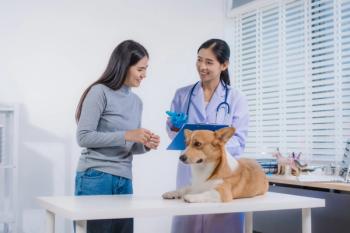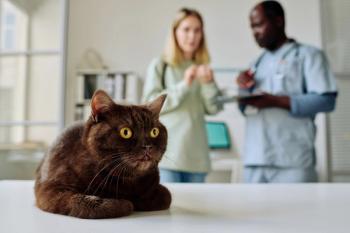
Promote weight loss by pointing out the perils of pet obesity
Seeing too many overweight pets in practice, but having a hard time getting clients on board with your weight reduction recommendations? Put some mass behind your message with this informational client handout.
According to a survey conducted last year by the Association for Pet Obesity Prevention (APOP), 53 percent of dogs and 58 percent of cats were found to be overweight or obese. While these numbers should come as no surprise to most veterinarians, clients might be shocked to hear about this alarming trend—and the health problems that excess weight can lead to. That's why Dr. Ernie Ward, a Veterinary Economics Editorial Advisory Board member, author of Chow Hounds: Why Our Dogs Are Getting Fatter and founder of APOP, makes a point to remind pet owners that keeping their furry friends lean and healthy can play a big role in the prevention of disease.
From dogs with osteoarthritis to cats with Type II diabetes, Dr. Ward sees a number of pets with conditions he believes could've been avoided or delayed had they stayed in a healthier weight range (Head over to
"I always minimize the importance of the pet's actual weight and emphasize the importance of a healthy lifestyle," says Dr. Ward. "It all boils down to quality of life."
Dr. Ward typically focuses on developing a plan for pet owners—one that includes calculating the number of calories the pet should consume and translating it into a volume of food (don't forget to factor in treats). He also prescribes a feasible exercise plan for them to follow—one that fits the owner's lifestyle and the pet's current physical ability.
"Whether it's a 15- or 30-minute walk twice a day, make sure you're recommending some sort of physical exercise for the pet," he says. "In order to truly understand the importance of exercise, clients need to hear it from their veterinarian."
Newsletter
From exam room tips to practice management insights, get trusted veterinary news delivered straight to your inbox—subscribe to dvm360.




